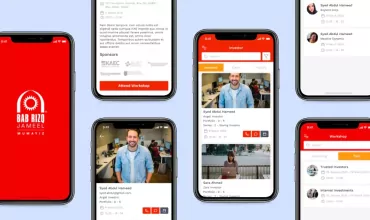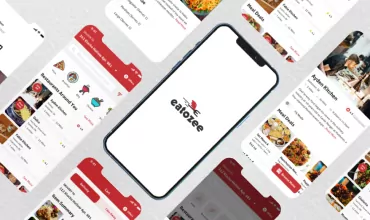XML-based Internet operating system
Table of Contents
Xcerion’s Internet Cloud Forms Over Google and Microsoft
The company plans to offer an XML-based Internet operating system and development platform that replicates the desktop computing experience from inside a Web browser and adds the benefits of cloud-based computing.
By Thomas Claburn
InformationWeek
In the third quarter of 2007, an all-but-unknown Swedish software company plans to release a new, free operating system that has the potential to radically alter the economics of software development. If successful, it may be able to further erode the power Microsoft derives from control of the desktop, to beat Google at its software-as-a-service play, and to make commodity Linux boxes more viable as a computing platform for the masses.
“What Skype did for telephony, we want to do for software development,” said CEO Daniel Arthursson. “We’re enabling the ‘Long Tail’ for business software.”
For the past five years, Xcerion has been working on an XML-based Internet operating system (XIOS) that runs inside a Web browser. In a way, XIOS is an abstraction layer that sits atop a true operating system like Linux, Mac OS X, or Windows, just as does Transmedia’s Flash-based Glide Next media sharing environment.
But XIOS aims to provide lower-level functionality. It’s not simply an interface for media sharing. Rather, it’s a complete XML-based operating system and development platform that replicates the desktop computing experience from inside the browser and adds the benefits of cloud-based computing, where applications and data are available over the network.
Watch it in action and you’ll see a visual representation of the threat it poses to Windows: Double-click on the application and the familiar desktop interface appears inside the browser window. Expand the browser window in full-screen mode and the Windows desktop vanishes beneath it. Of course the XIOS environment could just as easily look like the Mac OS desktop or something else entirely. This is what Microsoft feared Netscape would do, turn its main asset, the operating system, into middleware.
There are several reasons why one might want to run an XML-based operating system in a Web browser: security, data portability, freedom from hardware and platform lock-in, cost, built-in collaboration, and development productivity.
While no computer system is completely secure, XIOS should be immune to most of the malware in circulation today because it runs in a sandbox, a virtual environment where code can be executed without risk to computing resources on the outside.
Because XIOS is based on XML, the operating system, the integrated development environment (IDE), the applications, and data files are extremely portable and compatible. Applications can be easily tied to back-end XML Web services created with .Net, Java, or other Web technology. With XIOS running in a Web browser, users can access their files from any computer with an Internet connection and compatible browser, regardless of platform. The Xcerion’s operating system has to be downloaded, but it’s a small file — only 2 Mbytes.
But XIOS is more than just a thin client and network storage. As an operating system — yes, it has a command line if that’s what you want — it operates offline, storing files and running applications locally on a virtual hard disk. This is a big deal. XIOS achieves offline functionality that Adobe aspires to with its Apollo platform. Try using Google Spreadsheets offline. It doesn’t work. XIOS can be toted around on a USB flash drive with, say, Firefox and every computer you plug it unto becomes your computer, with your files.
The flexibility to store files locally, on corporate servers, or in the Xcerion cloud should enhance the appeal of XIOS to businesses that remain unwilling to trust application service providers with corporate data.
An operating system, of course, needs applications and that’s the major challenge Xcerion faces in the months leading up to launch and afterwards. Attracting developers might seem like an insurmountable challenge given the massive, entrenched developer communities that add value to the major software stacks. But Xcerion has a fair shot at doing just that because its IDE, an XML-based visual programming system, allows for extremely rapid development. Programming applications on XIOS is orders of magnitude easier to program than, say, C++ or Java. Arthursson said that it took him 30 minutes to develop an RSS-reader application and a few months to develop a PowerPoint clone. “If you can use FrontPage or Excel, you can program this,” said Arthursson.
When Xcerion launches XIOS in Q3, the company expects to have a free, functional productivity suite ready. Initially, XIOS will run only inside Internet Explorer and Firefox. Support for Apple’s Safari and Opera is planned.
But Xcerion would rather have third-party developers writing applications for its system. To provide developers with an incentive to write for the platform, Xcerion’s back-end system is designed to route revenue, either from subscription fees or from ads served to users of free programs, to application authors. Think of it as Google AdSense, except for programmers rather than publishers. Xcerion will make money by taking a portion of the proceeds. The actual percentage has yet to be determined, but Arthursson estimates it will be between 10% and 20%.
It may well be Google that serves these ads once Xcerion launches, or perhaps not — Google might see Xcerion as a threat, though Microsoft probably has more to worry about. Arthursson said his company still hasn’t settled on an ad provider.
Assuming it can find an ad partner, Xcerion will have a software-as-a-service platform that substantially expands the financial opportunities for programmers and software access (through ad support) around the globe. “It’s a great way for BRIC countries [Brazil, Russia, India, and China] to use software for free,” said Arthursson.
If XIOS proves appealing to developers, Xcerion’s open software-as-a-service platform could offer a far more diverse set of applications than controlled SaaS platforms like Google. “You can add more functionality yourself with our system,” said Arthursson. “Google only provides the applications they develop.”
According to Arthursson, XIOS will also provide a substantial advantage over current Internet-based applications because XIOS handles server communications more efficiently and it makes better use of local computing power, rather than relying on servers in the cloud for heavy number crunching. The result, he said, is fewer client-server transactions, better use of bandwidth, and faster response time for the user. XIOS supposedly works on a 56-Kbps modem, which doesn’t typically provide enough bandwidth for most of today’s Internet apps.
Because XIOS was built from the ground up, it includes an answer to two of the most vexing computing issues today: collaboration and keeping files backed up and synchronized across multiple machines and operating systems. Its transaction engine can mirror local files in the cloud and distribute them to others, allowing users to collaborate on the same XML document. Arthursson explained that an IM chat client could be created with a mere dozen lines of code because the process of communicating was simply mirroring the text input entered into two XML documents in different places — functionality built-into the system.
XIOS is not without limits. It can’t handle advanced motion graphics for gaming, though it works with other browser-based software like Adobe’s Flash. Arthursson, however, said that his company has had discussions with the Firefox development team and plans to start contributing to the Firefox code base. It may be that in a few years, as multi-core chips proliferate and browsers gain native 3D graphics capabilities, that this issue disappears.
XIOS isn’t yet well suited for mobile phones, a major area of computing innovation at the moment. If Xcerion can pull of a launch for XIOS on PCs, mobile phones may follow.
XIOS also needs to prove itself in terms of speed. Two years ago, Lou Perazzoli, an angel investor and a technical advisor to OVP Partners — he was one of the original architects of Windows NT — advised Arthursson that XIOS was too slow and not ready for release. “The speed now is fantastic,” said Perazzoli. Earlier this year, Swedish VC firm Northzone Ventures invested $10 million in the company.
What’s missing is any sense that the rest of the tech industry believes in this approach. Arthursson said he could not provide the names of companies or individuals currently testing XIOS because they weren’t ready to speak publicly yet. Xcerion plans to extend beta invitations to those who sign up at its Web site in the next month or two.
By this time next year, if all goes as planned, Xcerion’s impact is more likely to be felt by Salesforce.com’s AppExchange, which represents a similar, if more limited, concept in customized application development, than by Google or Microsoft. Three to five years out, Xcerion’s cloud may offer far more applications than the controlled, select sets of online applications available from Google or Microsoft and their respective online partners. It remains to be seen which vision of the future is more appealing to developers and to the public, but the openness of an operating system and a platform that pays sound promising.



